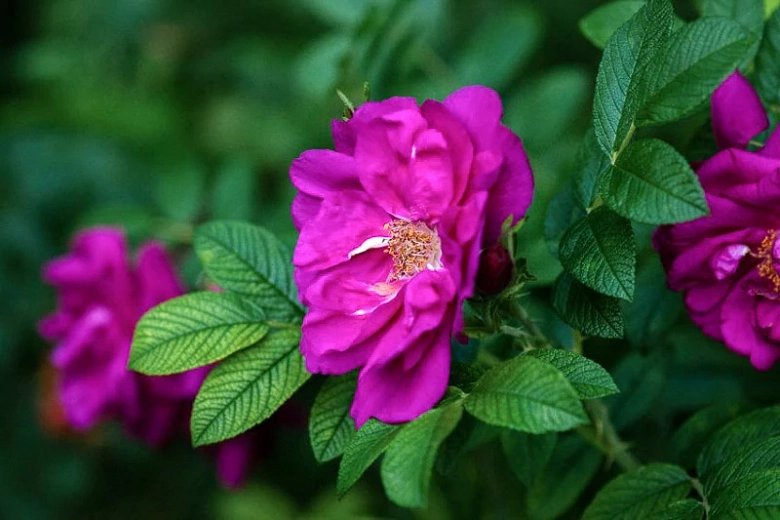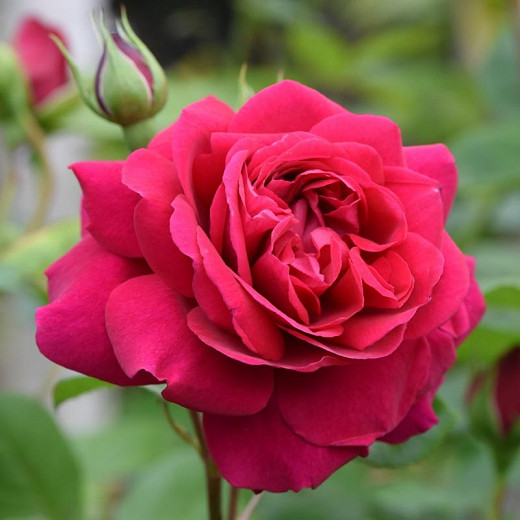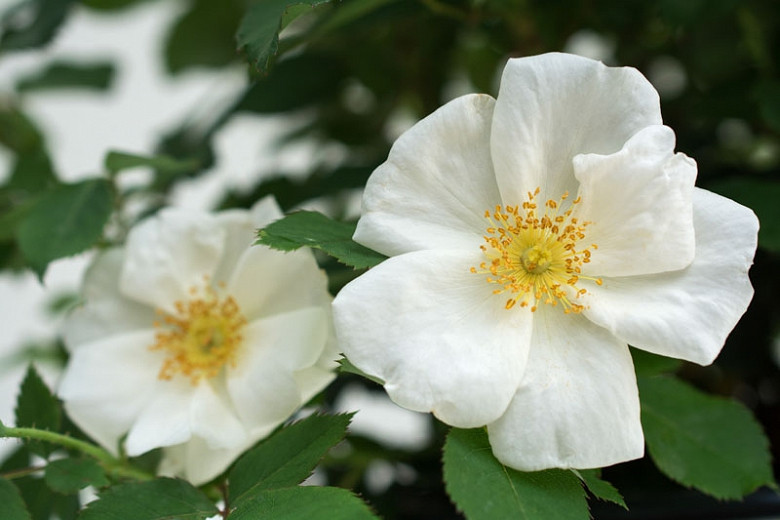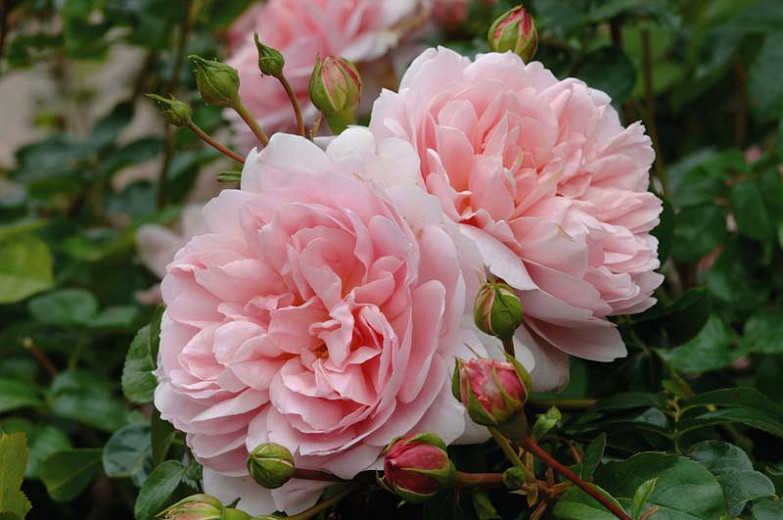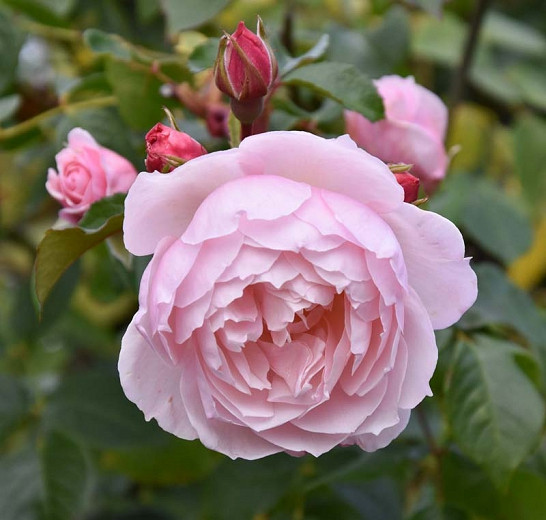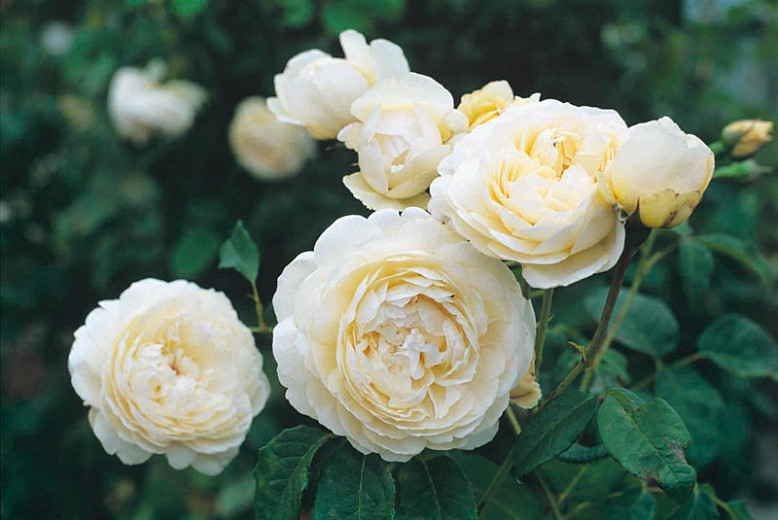Rosa rugosa Purple Pavement (Rugosa Rose)
Rosa rugosa 'Purple Pavement' is a vigorous, medium-sized shrub with a dense, upright, rounded habit. Blooming profusely from late spring to early fall, it boasts large, ruffled, semi-double, reddish-purple flowers with a strong fragrance. They stand out against the foliage of crinkly green leaves. The blossoms are followed by large fruits that are as pretty as the flowers themselves. Resembling cherry tomatoes, the striking scarlet rose hips, provide a beautiful contrast against the foliage which turns attractive shades of yellow and burgundy in fall. Cherished for the length of its flowering season and its heavenly fragrance, this shrub is tolerant of cold and salt. It is wonderful when used as a specimen, flowering hedge, or in a mixed border. Place it near a corner where you frequently pass.
- Grows up from 3-6 ft. tall and wide (90-180 cm).
- Best grown in full sun in humus-rich, moist, well-drained soils. Tolerant of poor soils and shade. Note that best flowering and disease resistance generally occur in full sun. For best flowering, apply a balanced fertilizer and mulch in late winter or early spring and a balanced fertilizer again in early summer.
- Featuring a bushy, upright habit, this ravishing shrub is a superb addition to borders and creates lovely fragrant flowering hedges. Perfect as a specimen plant. Give it some space so that its canes can soar or flop as they like, and enjoy their undisciplined habit.
- Keep an eye out for rose rust and powdery mildews. May be affected by aphids, leafhoppers, glasshouse red spider mite, scale insects, caterpillars, and rose leaf-rolling sawfly
- Attractive to pollinating insects, butterflies, and birds
- Do not remove spent flowers if you want to enjoy a beautiful crop of orange-red hips in fall and winter.
- Unlike most garden roses, rugosas object to heavy pruning. When you use them in landscaping, anticipate the fully-grown bush size and let them grow.
- Propagate by hardwood cuttings in autumn or by budding in the summer
- Rosa rugosa species is native to Eastern Russia, Korea, Japan, and Northern China.
- Find where this species is invasive in the United States.
- Discover beautiful U.S. native plant alternatives.
Requirements
| Hardiness | 2 – 7 |
|---|---|
| Heat Zones | 1 – 9 |
| Climate Zones | 1, 1A, 1B, 2, 2A, 2B, 3, 3A, 3B, 4, 5, 6, 7, 8, 9, 10, 11, 12, 13, 14, 15, 16, 17, 18, 19, 20, 21, 22, 23, 24, A1, A2, A3 |
| Plant Type | Roses, Shrubs |
| Plant Family | Rosa – Shrub Roses, Rosa – Roses |
| Exposure | Full Sun, Partial Sun |
| Season of Interest | Spring (Late)Summer (Early,Mid,Late)FallWinter |
| Height | 3' – 6' (90cm – 180cm) |
| Spread | 3' – 6' (90cm – 180cm) |
| Spacing | 36″ – 72″ (90cm – 180cm) |
| Water Needs | Average |
| Maintenance | Average |
| Soil Type | Chalk, Clay, Loam, Sand |
| Soil pH | Acid, Alkaline, Neutral |
| Soil Drainage | Moist but Well-Drained, Well-Drained |
| Characteristics | Fragrant, Showy, Fruit & Berries |
| Attracts | Birds, Butterflies |
| Garden Uses | Beds and Borders, Hedges and Screens |
| Garden Styles | Coastal Garden, Informal and Cottage |
